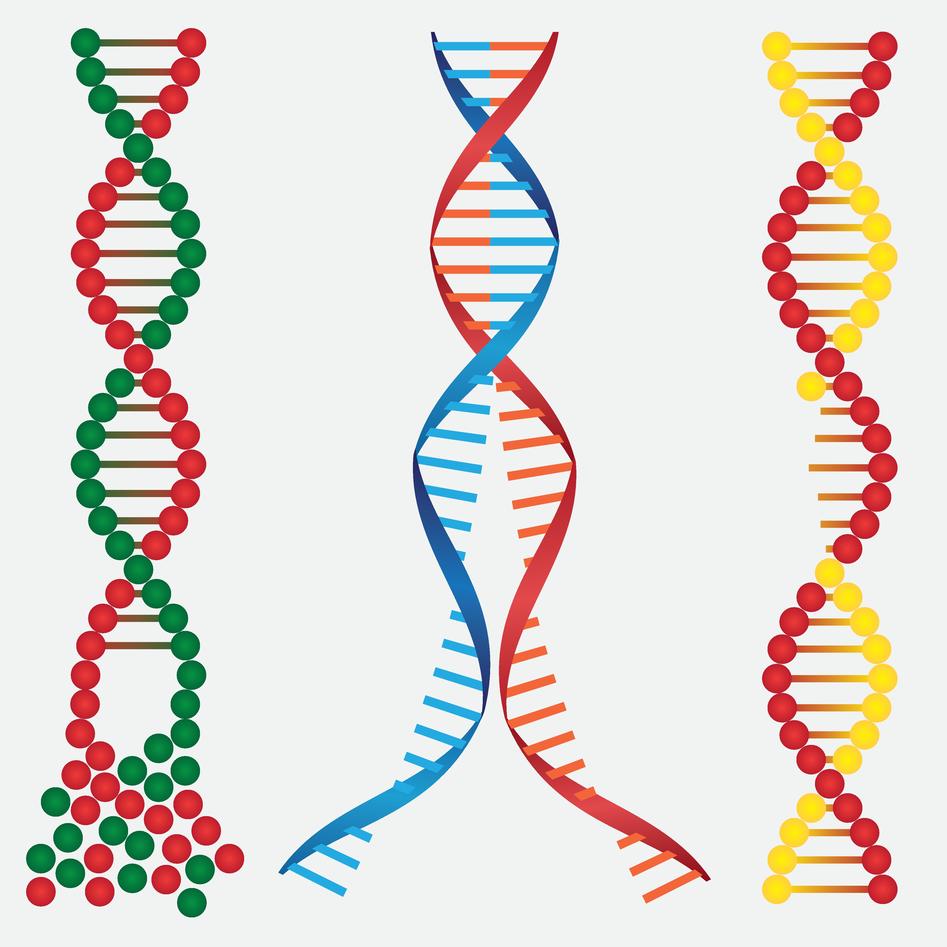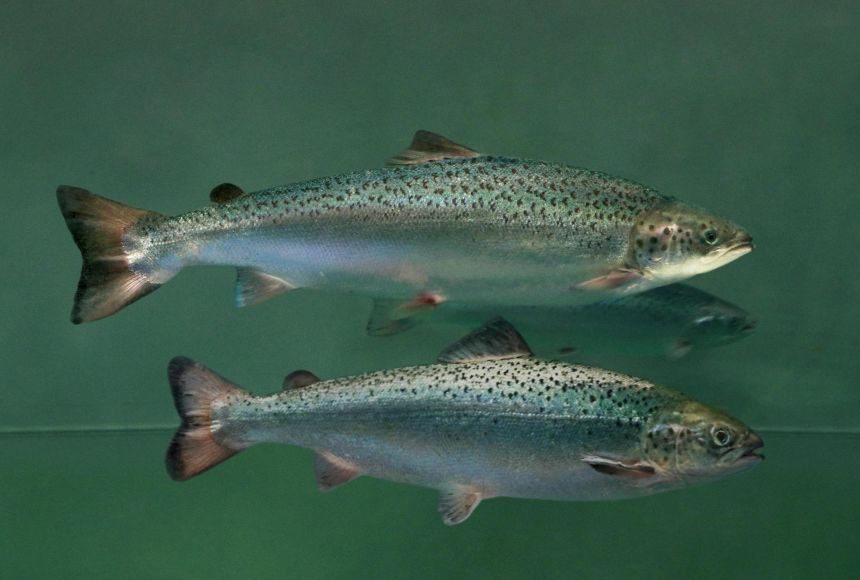Most, if not all, of the food crops we consume today have undergone some form of modification, genetically. About 10,000 years before the inception of biotechnology, man domesticated crops and animals he gathered from the environment that surrounded him.

During the domestication process, better plant materials and healthy animals were selected for propagation and breeding. Consequently, the selection for desirable traits by farmers for over thousands of years improved plants and animals for agricultural purposes.
The traditional form of breeding, known as selective breeding, involves the propagation of plants with desirable characteristics or by combining qualities from two closely related plants or animals.
These traits may be resistance to a particular pest or disease, or tolerance to harsh climatic conditions. This method of breeding has produced successful new varieties of crops over the years, but it has also failed to produce results on several occasions.
As a result of the unpredictable nature of this method at the genetic level, desirable traits such as disease resistance could also be bundled with undesirable traits such as low yield or poor quality. Besides, traditional breeding could take several years to yield results; the process is labour intensive, and is not always economically feasible. These drawbacks probably fueled the quest to develop new methods of modifying plants.

In 1940, plant breeders found that they could increase the rate at which mutations occur in plants. They realized they could use radiation and chemicals to change a plant’s DNA, the double helical molecule that houses the genes of all living organisms.
Altering the DNA of a plant may give rise to a new variety with desirable characteristics. Induced mutation breeding, as this process is called, has been used to develop about 2,500 crop varieties; however, only a handful of varieties are produced using this technique today; this is largely due to the advancements in genetics and molecular biology.
It is now well established that the basic structure of DNA is identical in all living cells, and the variations in organisms are determined by the sequence of the DNA base pairs ( two nucleotides on opposite complementary DNA strands that are connected via hydrogen bonds). Our understanding of genetics has deepened to the point where it is possible to transfer one or more specific genes from almost any organism including plants, animals, bacteria or viruses into the genome of another organism.
This is referred to as recombinant DNA technology, and it was first used to produce synthetic insulin on a commercial scale.

Currently, the technology is widely used to develop new plant varieties and animal breeds. Thus, in agriculture biotechnology, alterations are made directly to the plant’s or animal’s DNA sequence. The process begins with the identification of the gene that determines a desirable trait (in the donor organism); this particular gene is then selected, extracted and later transferred directly into the genome of the host organism.
Organisms that have genes from other organisms are known as transgenic or genetically modified organisms (GMOs).
GMOs possess novel features that enable them to either survive harsh climatic conditions, be more resistant to pests and diseases, synthesize chemicals that non-GMOs could not, or produce high yield and good quality.
Some GMOs are engineered to be resistant to herbicides and other agro-chemicals. Examples of genetically modified (GM) crops include pest resistant cotton, maize, and canola (mainly Bt or Bacillus thuringiensis); glyphosate resistant potato, papaya and squash.
Also, a number of genetically modified corps are being developed with traits of bio-fortification, phytoremediation, and production of pharmaceuticals; for instance, golden rice is a GM rice that has high levels of carotenoid for production of vitamin A which could reduce the occurrence of blindness, and bananas are being engineered to supply vaccines.
Commercial production of genetically modified organisms begun in the early 1990s, and by 2004, 81 million hectares of land distributed among 17 countries were cultivated to genetically modified maize, soybean, cotton, and canola.
Presently, genetically modified crops are commercially grown on about 150 million hectares in 22 developed and developing countries. The United States and Canada are the largest developed-country producers of transgenic crops, while Argentina, Brazil, China, and India make up the largest developing-country producers.
CASE FOR
The general increase in the cultivation of genetically modified plants may be due to the enormous benefits obtained from low labour and production cost, reduction in use of chemical inputs, and improved economic gains.
GM crops are usually high yielding, and hence, could significantly increase the income of farmers.
A seven-year study of Indian farmers found that those growing a genetically modified crop are very likely to increase their yield per acre by 24%, and boost profits by 50%. Genetically modified crops could also be used to prevent certain health problems such as blindness caused by vitamin A deficiency.
About 50,000 children worldwide go blind each year due to vitamin A deficiency. However, this could be avoided if children are fed with golden rice, a transgenic rice which produces beta-carotene, a precursor for vitamin A. In addition, only about three quarters of a cup of golden rice supplies the recommended daily amount of vitamin A.
Furthermore, genetically modified technology has proven to be more environmentally friendly. Unlike traditional agriculture which has the potential to pollute the environment as a result of fertilizer and pesticide application, GM crops actually make the environment safer by reducing the amount of chemicals used. From 1996 to 2011, GM crops have collectively reduced global pesticide application by 1.04 pounds.
Lastly, genetically modified technology helps to make food more affordable, without it, the price of major agricultural commodities would rise by about 15% to 30%.
It appears, however, that developing countries stand to benefit a great deal from biotechnology and its products. This point was made clear in the 2001 UN Human Development report “Making New Technologies Work for Development”.
The report identified biotechnology as an opportunity for the socio-economic advancement of third world countries. genetically modified crops and foods have the potential to solve the food security problem that has plagued most developing countries, especially those in Africa.
As stated early on, genetically modified crops are high yielding and of good quality; this means enough food could be produced on the limited agricultural lands to feed a country’s population, and the need to clear more land for crop production would be reduced. Aside reducing hunger, GM crops could have a huge impact on a nation’s economy. Egypt, Burkina Faso and South Africa are countries in Africa that cultivate GM crops on a commercial scale.
These countries have recorded huge returns from investing in such crops. For instance, GM crops are estimated to be benefit Burkina Faso’s economy by over US$ 100 million annually. Similarly, South Africa, which is the largest producer of GM crops in Africa, is reported to have boosted farm income by US$ 156 million from 1998 to 2006 through GM technology.
Other benefits include an improvement in the quantity and quality of meat, milk and livestock production; clean and safe methods for the production of vaccines and drugs; reduction in dependence on costly fertilizers and herbicides resulting in valuable saving for poor-resource farmers; and improved nutritional quality and health.
CASE AGAINST
Despite the tremendous benefits of GM crops, concerns have been raised about their safety, and their environmental and socio-economic effects.
Those against GM foods argue that allergenic genes could be accidentally transferred to humans, causing dangerous reactions in people with allergies. For instance, an allergenic Brazil-nut gene was transferred into a GM soybean variety. This was discovered during the testing phase, and as such the soybean was not released.
Genes that confer antibiotic resistance are used as ‘markers’ to indicate that the process of gene transfer has succeeded. Critics have expressed that these ‘marker genes’ could confer resistant to antibiotics; should this happen, many antibiotics that are used to treat bacterial infections could become inefficient and acute health complications could result.
Another major concern raised by objectors is that genes introduced into GMOs could end up in unexpected places. Interactions between GMOs and non-GMOs may occur at gene, cell, plant, and ecosystem level. This could lead to serious problems if, for example, herbicide resistance genes end up in weeds.
With regards to the socio-economic effects, many people fear the dominance of the agricultural sector by a few biotech companies. Usually, GM technologies are propriety, developed mostly by the private sector and released for commercial use through licensing agreements. This implies that farmers would have to rely solely on biotech companies for planting materials, and this may have a negative impact on small-scale farmers.
Farmers also fear that they might have to purchase crop varieties developed from genetic materials that were obtained from their fields when they buy seeds from companies holding patents on specific GM crops. However, provisions have been made in the World Trade Organization’s agreement on Trade-Related Intellectual Property Rights (TRIPS) to protect farmers’ traditional practices.
Additionally, the new International Treaty on Plant Genetic Resources for Food and Agriculture recognizes the role of farmers in the conservation and use of plant genetic resources over time and for future generations. It provides and international structure to regulate access to plant resources and establishes a mechanism to share the benefits derived from the use.
CONCLUSION
Although these claims are worth noting, at present, there is no scientific evidence that suggests GMOs have deleterious effects on humans, animals, or the environment.
Before GMOs are released for consumption, they are subjected to extensive risk assessment and safety testing, and so far, the results show that there are no GMOs in use that pose risks to humans. This does not necessarily mean that GMOs can never do any harm to humans or the environment, just that the evidence obtained from various studies makes this scenario unlikely.
Moreover, in the United States, GM crops have been on the market for about 20 years, and no negative consequences on human health have been recorded. Some international organizations such as the American Association for the Advancement of Science, the World Health Organization, and the European Union share the view that GMOs are just as safe as other foods.
In conclusion, it is quite clear that biotech and GMOs hold the solutions to the various agricultural, environmental, food security and health problems that most countries, especially the developing ones, face. On the other hand, the potential risks of this technology and its products should not be overlooked, and proper measures must be put in place to regulate them.
Although developing countries stand to gain greatly from this technology, efforts must be made to increase local capacity for testing and assessing in order to ensure the safe delivery of GM products. Finally, educating people about the science behind genetic engineering, and the benefits and potential risks of GMOs would help allay the fears of the general public; as they say, people usually fear what they do not understand.
